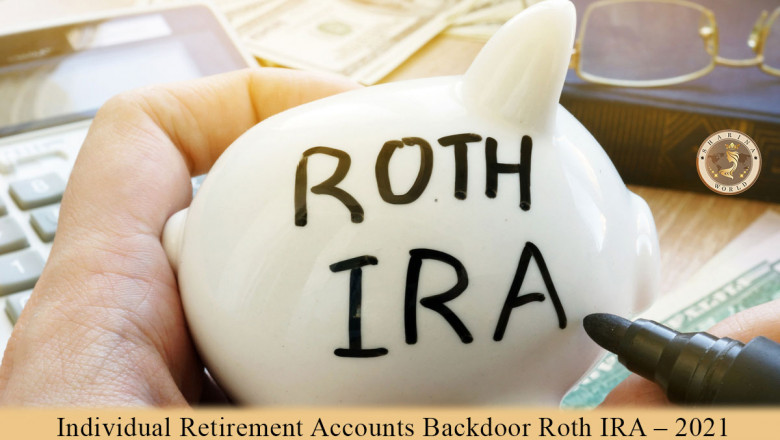views

Individual Retirement Accounts Backdoor Roth IRA - 2021 | Best Guide - CPA Clinics
Generally, you can only contribute to a Roth IRA if you have taxable compensation and income less than the top of the phase-out range for your filing status (see chart below). If your income is greater than that threshold amount, you are prohibited from contributing directly to a Roth IRA.
A “backdoor Roth IRA” allows a taxpayer to bypass income limitations by first making a nondeductible contribution to a traditional IRA and then converting it into a Roth IRA. If the conversion happens soon after the original contribution, there will be little or no taxable income or tax assessed. Due to the distribution rules for traditional IRAs, this works best if you have no other traditional IRAs.
Generally, if you are prohibited from making a direct Roth IRA contribution, you are phased out from making a deductible traditional IRA contribution as well. Therefore, in order to make a backdoor Roth IRA contribution, you would first make a nondeductible contribution to a traditional IRA. Nondeductible contributions are considered to be made with money you have already paid tax on, or “after tax.” Shortly after making a nondeductible contribution to a traditional IRA, you can convert the traditional IRA to a Roth IRA.
A conversion of a traditional IRA to a Roth IRA, and a rollover from any other eligible retirement plan to a Roth IRA, made in tax years beginning after December 31, 2017, cannot be re-characterized back into a traditional IRA. Accordingly, a re-characterization cannot be used to unwind a Roth IRA conversion.
You can withdraw all or part of the assets from a traditional IRA and reinvest them in a Roth IRA. The amount that you withdraw and timely contribute (convert) to the Roth IRA is called a conversion contribution. If properly rolled over, the 10% additional tax on early distributions will not apply. However, a part or all of the distribution from your traditional IRA may be included in gross income and subjected to ordinary income tax.
There are no income limitations on converting a traditional IRA into a Roth IRA. The conversion is treated as a rollover, regardless of the conversion method used.
You can convert amounts from a traditional IRA to a Roth IRA in any of the following three
ways.
Trustee-to-trustee transfer. You can direct the trustee of the traditional IRA to transfer an amount from the traditional IRA to the trustee of the Roth IRA.
Same trustee transfer. If the trustee of the traditional IRA also maintains the Roth IRA, you can direct the trustee to transfer an amount from the traditional IRA to the Roth IRA. Conversions made with the same trustee can be made by re-designating the traditional IRA as a Roth IRA, rather than opening a new account or issuing a new contract.
If you convert a traditional IRA that you received a tax deduction on in a previous year to a Roth IRA, you will owe taxes on the entire amount converted.
Example: Jaslyn has a traditional IRA with a fair market value of $500,000. All of the contributions to the traditional IRA were deductible. If Jaslyn converts the entire $500,000 traditional IRA to a Roth IRA, she will owe ordinary income taxes on the full $500,000 amount.
If you make a nondeductible contribution to a traditional IRA, you can convert the entire amount tax-free. Only the earnings on the nondeductible IRA contributions are taxed.
Example: Manny is single and has a modified AGI of $250,000. He wishes to save money in a Roth IRA so he can make nontaxable withdrawals upon retirement. In 2021, he opens a traditional IRA with a $6,000 nondeductible contribution and a couple months later, converts it to a Roth IRA. He has no other traditional IRAs. At the time of Roth conversion, the account had increased in value by $250, which is the only taxable part of the conversion.
Read Full Individual Retirement Accounts Backdoor Roth IRA - 2021 | Best Guide












